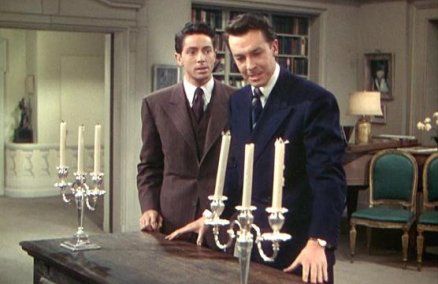Wondering what in the world is World of Warcraft? Don’t know squat about SWAT? Then you’ve come to the right place.
It’s certainly no exaggeration to say that computer games are a phenomenon of religious proportions. But with such a devoted following and a plethora of genres, the lifestyle isn’t something you can easily waltz into. So, we’ve set up a little cheat sheet for you to ensure that you don’t seem like such a n00b when you boldly and finally enter the world of computer gaming.
Now, we’re not going to tell you how to play the games themselves; that you’re going to have to train up on your own. But we will fill you in on some of the idiosyncrasies of the lifestyle, so that you don’t reek like a free frag when you walk into a Local Area Network (LAN) café, or log on to an online game.
What’s that? You don’t know what a “frag” or a “n00b” is? Oh, dear …
Lingua Fragger
We’ll start with the basics: language. There are two very distinctive things about a gamer’s vocabulary that will strike you instantly. First off, they swear like you wouldn’t believe, usually in a combination of English and Hokkien.
Second, and more importantly, they’ll be using a myriad of phrases that are going to sound completely alien to you. There are several dialects of gamespeak and explaining every single term would take ages, so we’ll just clue you in on the first thing most people need to know about any language: its derogatory terms and insults.
A “frag” is a notch on a player’s body count, which makes a “free frag” someone who’s so efficient at getting killed that he’s practically a guaranteed point.
After having your virtual brains blown out, expect your demise to be followed by your opponent’s cry of victory: pwned! This started off as a typo of “owned,” which in gamespeak is essentially the word for rubbing it in after you’ve kicked someone’s ass.
A n00b (derived from “newbie”) is the new guy, or to put it more bluntly, the fresh meat. It’s also a title you’re going to be stuck with when you start out, so get used to it. Gamers love to jump on n00bs, with a lot of friendly typed-out jabs (and some not-so-friendly kills) so believe us—you’re going to have to learn the ropes awfully quickly to shake this tag.
On the other end of the spectrum, however, are the gamers who’ll be dominating you in every possible way. These guys we refer to as being l33t, which comes from “leet,” a short version of “elite”. Expect to hear the cockier ones proclaim their status quite often, especially to all the n00bs.
Game On
This brings us to actually picking out a type of game that’s most suitable for you. While it’s great that you’ve already started clearing space on your hard drive so that your computer doesn’t lag in the middle of a game, let’s not jump the gun here.
There are tons of different genres for you to get your game on—sports, puzzles, adventures and even God games (which allow you to create whole worlds and run them as you see fit). The two most popular types, and probably the best to start with, are role playing games (RPGs) and first-person shooters (FPSs). These genres best encourage some sort of team structure with other players, and there’s no better way to learn than from more experienced gamers.
Inspired by pen-and-paper games, like Dungeons & Dragons from way back when, RPGs are story-oriented, focusing on getting your character (which you’ll have to customize, statistics and all) through a series of levels and challenges. The most popular subset of RPGs are the Massive Multiplayer Online RPG (or MMORPG), which is set on a much larger, global scale.
While you could fly solo for RPGs, playing with a team makes a whole lot more sense. Not only do your characters level up (become more effective and powerful) a whole lot faster, but there’s the child-like glee that fills players when they’re planning out strategies as a collective. That’s right, the proper strategy will definitely be a huge boon to you in RPGs. To play as part of a group, you could head down to your local LAN café, but most people go online and team up with players from all around the world.
FPSs are more for those of you who love your action fast, furious and (to use the utterly out-of-date, yet totally accurate catchphrase) in-your-face. The object of most of these is simple: run around with your dangerously large array of weapons and kill your enemies before they do you in.
Pixilated Tambourine Men
Now that you know what you want, the main question is where to get it. There are a number of outlets you can check out, the most notable being Funan Digitalife Mall, which features a number of computer game stores. A couple of gamers have specifically singled out Challenger @ Funan (#06-00, Funan Digitalife Mall, 109 North Bridge Rd., 6339-9008).
However, if you’re willing to head out of the central areas to hunt for a good place to pick up some games, we recommend Computex Computer Services (#04-30, 756 Upper Serangoon Rd., Upper Serangoon Shopping Centre, 6285-7058). It’s a small store with a huge reputation that has reached as far as the US, thanks in part to a very loyal customer base. Not only is it synonymous with great PC games at decent prices, but if you’re looking to beef up your computer’s capabilities to fit your increasing number of games, this is the place to turn to.
Battle Grounds
It’s “go” time, folks, so the next step is to pick your arena of choice. The online route’s certainly a lot less daunting. At the end of the day, the anonymity of the Internet doesn’t make going toe-to-toe with other competitors such an intimidating encounter, especially if you have shown some semblance of knowing what’s going on. Be sure to have a decent connection though. The last thing you want is for your game to lag for a few seconds and, before you realize it, your character’s been reduced to a vaporized smear.
You’re looking for a broadband connection at the very least, so check with Starhub (#01-36 and #B2-38, Plaza Singapura, 68 Orchard Road, Hotline: 1633) or SingNet (#B1-36, CityLink Mall, One Raffles Link, Hotline: 1610). They’ve got plans designed for the gaming crowd.
Like we said earlier, online games generally tend to be more suited for RPGs, but if you don’t have the right speeds, you might want to try hitting the LAN cafés. Catering more to the FPS crowd, however, some of these can be pretty intimidating—they’re dark, cold, noisy and usually filled with kids … or worse—childish adults.
But pick the right haunt and LAN cafés are a whole lot more enjoyable. A large group of friends certainly helps enhance the experience. Don’t be fooled by the name though. A lot of LAN cafés’ idea of food sometimes means that there’s just a snack bar selling chocolates and sodas, if you’re lucky.
Neighborhood cafés are great if you don’t plan to play for extended periods at a time, but for late nighters, e2Max @ Cine-L9 (#09-01, Cathay Cineleisure Orchard, 8 Grange Rd., 6235-9249) is the perfect place for doing battle. Open till the wee hours, and conveniently located in town, this is the place to go to if you’ve got the sudden itch to blow things up in the middle of the night. Prices range from $2.50 to $3.50 per hour, depending on what time you’re playing.
Another great spot for LAN gaming would be Head Quarters (#02-07, Parklane Shopping Mall, 35 Selegie Road, 6720-6780). It’s a quieter spot than e2Max, especially during the evenings. Expect rates hovering around the $2 per hour range.
You could also give Holland V Cyberspace (25C Lor Liput, 6463-8467) a try. It’s not nearly as well known as the others, so it’s normally a little emptier, but it’s still a great place to check out. Rates here are at about $2.40 an hour.
Side-Effects
We feel it’s fair to warn you that extensive PC gaming will lead to a number of side effects, the most common of which is the nagging significant other. For this little headache, we suggest you turn them onto gaming too. A disadvantage is however, sharing the computer, but staying out late at LAN cafés won’t be seen as much of an offence anymore.
You should also expect to lose quite a bit of sleep. Whether it’s an extensive run in RPGs that go on a lot longer than you realize or a late night FPS assault with the guys, you’d better be prepared to hog the whole pot of coffee at the office the following day.
Finally, you might want to take a little time after each game to recover from the adrenalin rush that you’re most likely going to get. These usually involve getting a drink and (proper) food somewhere to go over how badass you were … or at least how close to being a badass you were.
LOL!
A big part of PC gaming (and gaming in general) is its humor, and nowhere can you immerse yourself in this weird breed of hilarity better than in the culture’s web comics. Embracing as well as satirizing the lifestyle all at once, these strips have become just as much a part of a gamer’s daily routine as … well, gaming. So, log off your server for a second and LOL (that means “laugh out loud”, you n00b) at these.
Penny Arcade!, www.penny-arcade.com
The strip that’s become almost synonymous with gamers, Mike Krahulik and Jerry Holkin’s Penny Arcade! pokes fun at everything from the industry to some of the less-than-stellar games on the market with Monty Python-like silliness and pointlessness. With punch lines that are so deeply immersed in the culture, this one’s strictly for the gaming initiated.
PVP, www.pvponline.com
Slightly more accessible to n00bs than Penny Arcade!, Scott Kurtz’s PVP stars the eclectic staff of a gaming magazine. Showing how gaming culture has intertwined with their “normal”, every day lives, the strips deals with exaggerated gaming situations like a relationship on the rocks due to an obsession with World of Warcraft, and how a supposedly lucky hat helps you transcend into the class of the gaming l33t. PVP’s great fun while waiting for the servers to load up.
Mac Hall, www.machall.com
With the amount of time that the characters of Mac Hall spend gaming, you’d have to wonder why creators Ian McConville and Matt Boyd even bothered putting the comic in a school setting. With a sense of humor closer in tone to Penny Arcade!, this irreverent series’ best moments usually revolve around ironically funny in-game situations that most gamers can (unfortunately) relate to from personal experience.
Advertisement























